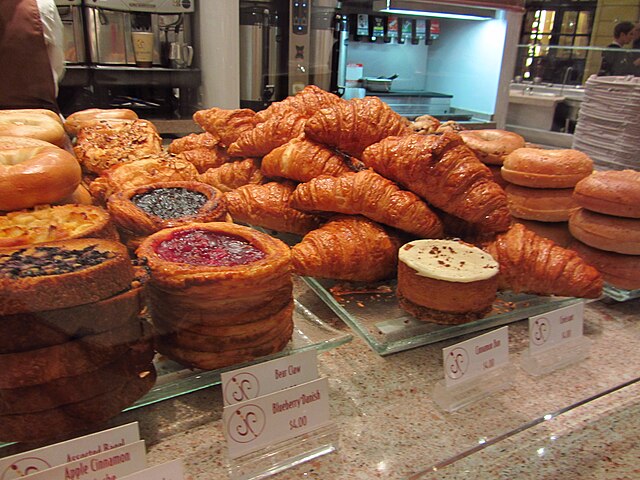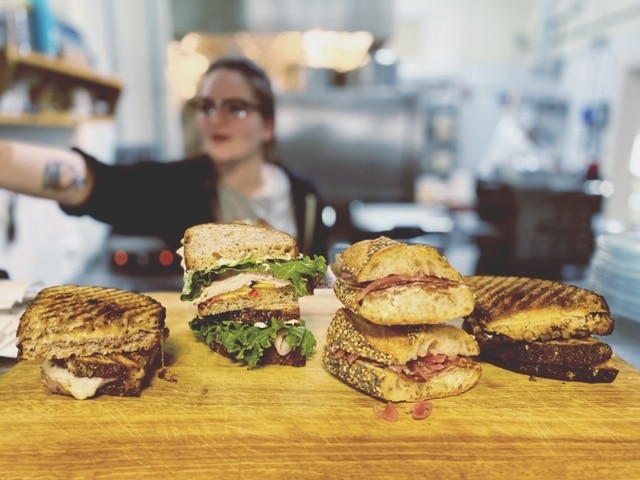
Baking has been a universal language for centuries. From the warm, flaky croissants of France to the spicy, sweet breads of Latin America, baked goods tell a story of culture, history, and community. Across the globe, the traditions of baking are as varied as the regions they come from, each with its unique techniques, ingredients, and flavors. Let’s take a flavorful journey through some of the world’s most beloved baking traditions and discover how different cultures transform basic ingredients like flour, water, and yeast into masterpieces.
1. France: The Art of the Boulangerie
When you think of French baking, the first image that often comes to mind is the iconic baguette. A quintessential part of French culture, the baguette is more than just bread; it represents the French way of life. The crispy golden crust and soft, airy interior make it perfect for everything from breakfast to dinner. France has strict laws on how baguettes must be made, reflecting the importance of bread to the nation’s identity.
But France’s baking traditions go far beyond the baguette. Croissants, pain au chocolat, and brioche are equally celebrated. These pastries, crafted with meticulous attention to detail and buttery, flaky doughs, are enjoyed at bakeries (boulangeries) throughout the country. The method of laminating dough—folding butter into it to create thin layers—is a French innovation that has influenced baking globally.
2. Italy: A Celebration of Simplicity
Italy’s baking traditions are rooted in simplicity. Italian bread, like ciabatta and focaccia, often use fewer ingredients than their French counterparts but rely on the quality of those ingredients to shine. Olive oil, rosemary, and sea salt are the key components of a great focaccia, a flatbread with a golden crust and tender crumb. Ciabatta, with its irregular holes and chewy texture, is ideal for soaking up olive oil or serving alongside pasta.
Then, there’s panettone, a sweet, airy bread from Milan that’s typically enjoyed during Christmas. Panettone is made with a rich dough, flavored with candied fruits, and often served with a glass of wine or coffee. The careful fermentation process is key to creating its light and fluffy texture, a hallmark of Italian baking craftsmanship.
3. Germany: Hearty and Wholesome
Germany is famous for its hearty and wholesome breads. Rye bread, or Roggenbrot, is a staple in German households. Dark and dense, rye bread has a slightly sour flavor due to the use of a sourdough starter. This type of bread is perfect for holding up to rich toppings like cured meats and cheeses, commonly served in German breakfasts and dinners.
Another celebrated German bread is pretzels (Brezeln), with their distinctive knotted shape and salty, crispy crust. Pretzels date back centuries and are often associated with Bavaria. They’re boiled in an alkaline solution before baking, which gives them their characteristic deep-brown hue and chewy texture.
During Christmas, Germans bake stollen, a fruitcake-like bread filled with dried fruits, nuts, and marzipan, dusted generously with powdered sugar. This festive treat, rich in tradition, is said to symbolize the swaddled Christ Child, and has been enjoyed for over 500 years.
4. Mexico: A Fusion of Indigenous and Spanish Influence
In Mexico, baking traditions are a fusion of indigenous techniques and Spanish influences brought by colonists. One of the most well-known Mexican breads is pan dulce (sweet bread). These colorful, soft buns are often flavored with vanilla, cinnamon, or chocolate, and are a favorite during breakfast or merienda (afternoon snack).
Conchas, named for their shell-like appearance, are a popular variety of pan dulce. They have a sweet, crumbly topping that’s etched with a shell pattern, giving them their iconic look. Another essential bread in Mexican culture is pan de muerto, a round, sweet bread made for the Day of the Dead celebrations. It’s often flavored with anise and orange blossom, with decorative bone-shaped pieces of dough placed on top to honor the deceased.

5. India: Bread Beyond the Oven
In India, bread is rarely baked in an oven. Instead, many traditional breads are cooked on a hot griddle or in a tandoor, a clay oven. Naan and roti are two of the most popular types of flatbreads in India. Naan, often served with curries and stews, is soft and slightly chewy, traditionally cooked in a tandoor to give it a smoky flavor and charred edges.
Chapati, another staple flatbread, is made with whole wheat flour and is thinner and more rustic than naan. It’s a daily bread, often eaten with vegetables, lentils, and meats. Indian breads are an integral part of every meal, and their preparation varies across the country’s diverse regions.
Parathas, stuffed flatbreads filled with everything from spiced potatoes to paneer, are a more indulgent option. They are fried in ghee (clarified butter), making them rich and flaky. Whether served plain or stuffed, Indian flatbreads are the backbone of the country’s diverse and flavorful cuisine.
6. Middle East: The Roots of Flatbreads
The Middle East is home to some of the oldest baking traditions in the world. Pita bread, with its soft, pocketed interior, is a staple across the region. Its versatility means it can be stuffed with meats and vegetables or used to scoop up hummus, baba ganoush, or other dips.
Another iconic Middle Eastern bread is manakish, a flatbread topped with ingredients like za’atar (a mix of thyme, sesame seeds, and sumac) or cheese. Manakish is often enjoyed for breakfast or lunch, paired with fresh vegetables and olives.
In Persia, lavash is a thin, soft bread that has been made for centuries. Traditionally baked in a tandoor, lavash is used to wrap meats, vegetables, and cheeses or served alongside kebabs.
7. Japan: A Blend of Tradition and Innovation
Japan’s approach to baking reflects its love for precision and innovation. Although Japan doesn’t have a long-standing tradition of bread-making like Europe, it has adopted Western baking techniques and added its own unique twist. One of Japan’s most famous baked goods is shokupan, a soft, fluffy white bread that’s similar to brioche. It’s perfect for sandwiches and is a staple in many Japanese households.
Another popular Japanese baked item is melonpan, a sweet bun topped with a thin layer of cookie dough that cracks and resembles a melon’s skin when baked. Japanese bakeries also offer matcha-flavored breads and pastries, combining the traditional tea flavor with modern baking techniques.
8. United States: Melting Pot of Baking Traditions
Baking in the United States reflects the country’s diverse immigrant population. From New York-style bagels to Southern biscuits, American baking is a melting pot of traditions. Apple pie, often considered the epitome of American desserts, has its roots in English baking traditions but has been adopted and adapted over generations. NosBoss Nangs Fast Delivery makes it easier than ever for bakers across the U.S. to access quality ingredients quickly, whether they’re preparing classic cinnamon rolls, donuts, or chocolate chip cookies. Each region has its specialties, such as cornbread in the South or sourdough in San Francisco, reflecting the country’s rich culinary diversity.
Cinnamon rolls, donuts, and cookies like chocolate chip are also deeply embedded in American culture. Each region has its specialties, such as cornbread in the South or sourdough in San Francisco, reflecting the country’s rich culinary diversity.
Conclusion
Exploring global baking traditions reveals the deep connections between food, culture, and history. Each region’s approach to baking is shaped by its geography, climate, and traditions, resulting in a unique expression of culinary art. Whether it’s the carefully laminated layers of a French croissant or the smoky flavor of an Indian naan, baked goods offer a window into the heart of a culture. So, the next time you bite into a loaf of bread or a pastry, remember that you’re not just enjoying a delicious treat—you’re tasting centuries of history and tradition.
